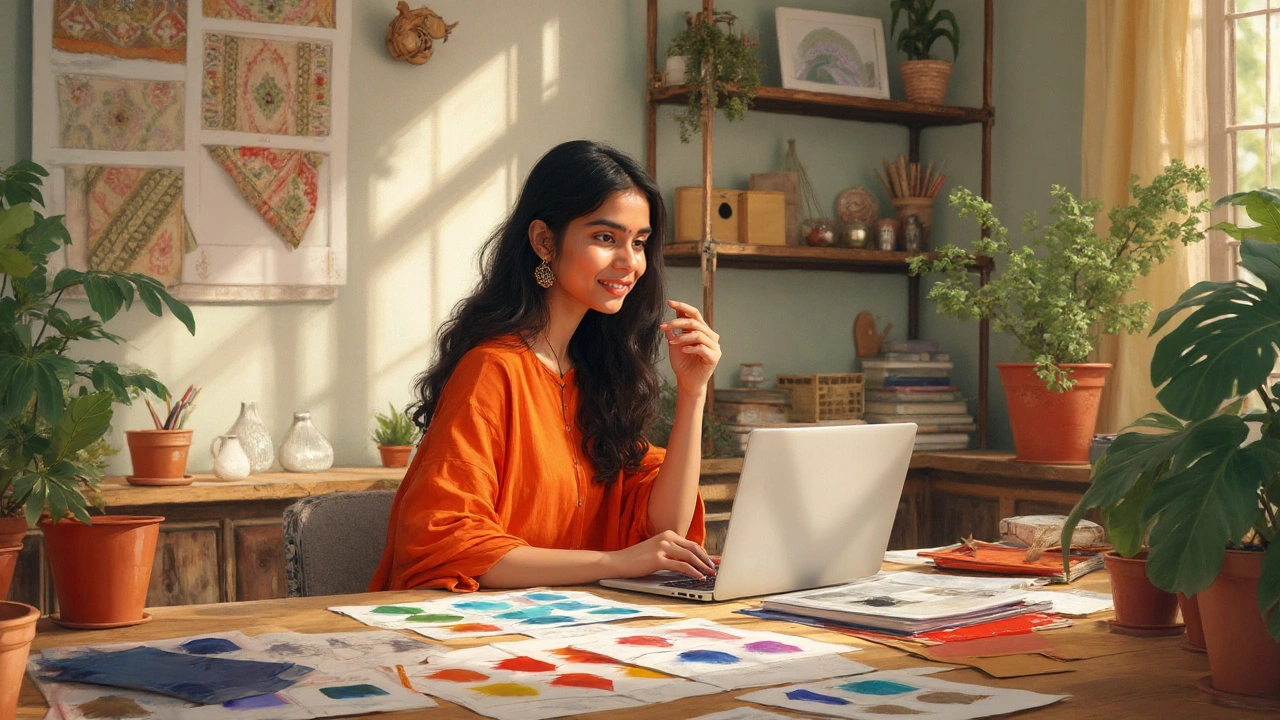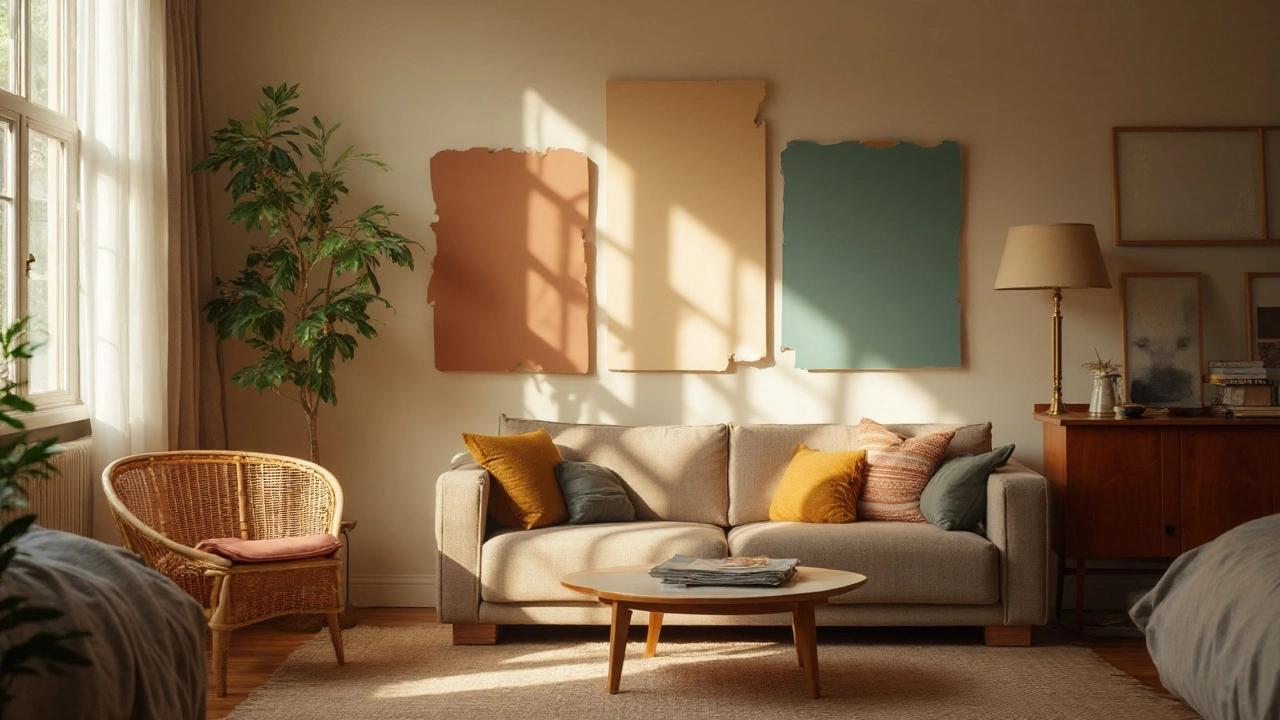If you ask someone to picture an "iconic wallpaper," no matter their age, there’s a good chance the same pattern flashes through their mind: the Windows XP “Bliss” wallpaper. That rolling green hill under a vibrant blue sky, captured by photographer Charles O’Rear in California’s Sonoma County, is burned into the memories of over a billion people worldwide. But how did a simple photo become the default backdrop for modern computer culture, and what other wallpapers have achieved this legendary status in our homes and lives?
The Legend of the Windows XP Bliss Wallpaper
The image known as “Bliss” needs no introduction for anyone who sat at a computer between 2001 and the late 2000s. Microsoft spent $100,000 to purchase exclusive rights to Charles O’Rear’s photo, which was snapped on a whim during a drive through the Californian countryside in 1996. No Photoshop. No fancy filters. Just an unplanned shot that would soon cover more computer screens than any image in digital history.
This wasn’t just a background; “Bliss” became a pop culture phenomenon. Microsoft claims it’s the most viewed photograph ever taken, with an estimated one billion people seeing it every day at the peak of XP’s popularity. The lush simplicity of those green hills felt like digital escapism. Even today, that lone XP hill continues to inspire memes, parodies, and even pilgrimage trips by nostalgic fans seeking the now-fenced Sonoma field. Why did “Bliss” hit home? Maybe because it embodied hope, calm, and a connection to nature just a click away.
Before “Bliss,” wallpapers meant something different. For decades, wallpaper was about printed patterns covering walls in homes, not screens. Traditional wallpaper companies like William Morris & Co. or Sanderson set trends, but few patterns achieved single-image celebrity status worldwide. The arrival of personal computers shifted what “wallpaper” meant—and helped define entire aesthetic eras by their default screens.
Classic Patterns: The Old-School Wallpaper Icons
Step into a Victorian mansion or a cool sixties apartment, and the walls tell their own story. Iconic printed wallpaper patterns were once a sign of taste and class. The "Willow Boughs" pattern, created by William Morris in 1887, still gets referenced in movies and designer homes. If you’ve seen green, swirling vines on a cream background, you know the look. Morris & Co. designs stood for English arts and crafts elegance, relying on botanicals and intricate hand-printed details that still look fresh today.
Fast-forward to the mid-20th century, and flocked damasks or bold geometric prints took over. Find old pictures from the 1960s and 70s, and you’re likely to spot those orange and brown diamond patterns or psychedelic swirls. Some folks love them; others... not so much. These styles made every living room feel a bit groovy. It’s no surprise they make comebacks during retro revival moments. Designers lean into these patterns when creating that "vintage chic" mood, selling reissued versions and inspiring DIYers to give grandma’s look a modern spin.
Another classic that’s stood the test of time is the "Toile de Jouy" style from 18th-century France. Scenes of pastoral life in delicate blue, red, or green capture everyday moments: lovers picnicking, shepherds with their sheep. Even brands like Ralph Lauren or Anthropologie now use these timeworn motifs in modern collections, proving their trend-proof appeal. Go to any high-end wallpaper store, and you’ll see these legacy patterns side by side with smart digital prints. The old and the new are always tangled together.
Wallpaper in Pop Culture and History
A great wallpaper doesn’t just decorate a space—it tells a story. Films and TV shows frequently use certain wallpaper designs to establish a period or mood. The playful yellow floral paper in Phoebe Buffay’s apartment on “Friends” is instantly recognizable. Sherlock Holmes’ flat in the BBC series features a black-and-gold damask that became iconic enough for fans to sell stickers, posters, and even phone cases inspired by it.
Movie directors and set designers carefully select wallpaper that fits the emotional landscape of a scene. Wes Anderson, for example, is famous for his obsession with symmetry and pattern—check out the pink-and-red geometric wallpaper in "The Grand Budapest Hotel." That look didn’t just stay on screen; it inspired real-world hotel and restaurant décor around the world as people tried to copy the film’s unique mood.
Sometimes wallpaper is used for psychological effect. Look at "The Shining": bold orange, brown, and mustard hexagons in the Overlook Hotel’s corridors make viewers feel just a bit unsettled. These patterns go down in pop culture legend not because they’re always beautiful—they’re memorable. When the right wallpaper appears at the right moment, it becomes impossible to separate it from the mood or message it helped create.
| Famous Wallpaper | Location/Purpose | Impact |
|---|---|---|
| Windows XP Bliss | Default desktop image | Billions of daily views; digital nostalgia |
| Willow Boughs (Morris & Co.) | Victorian homes & design | Symbol of Crafts Movement |
| Sherlock Damask | TV set design | Fan culture & merchandise |
| Overlook Hotel Hexagon | "The Shining" film | Psychological mood-setter |
| Phoebe’s Floral (Friends) | TV set design | Pop humor & nostalgia |
How Iconic Wallpaper Shapes Modern Interiors
Designers today aren’t content to just throw paint on every surface. Enter the wallpaper revival. Sales shot up 70% in the early 2020s, as people got tired of boring white walls during lockdowns and started adding patterns to their home offices or bedrooms. It’s not just about looking pretty; wallpaper sets a mood, hides imperfections, and can even make a cramped room feel expansive if you pick the right design.
There’s a science to it. Patterns with horizontal lines can visually widen a narrow room. Large, airy prints make small spaces feel less claustrophobic, while bold, saturated patterns can anchor a big living area, adding warmth without piling on furniture. Removable wallpaper—also called "peel and stick"—lets renters or commitment-phobes experiment without risking their security deposit. Companies like Chasing Paper and Tempaper blew up by making it easy for anyone to slap up a lush mural, even if they’ve never held a smoothing tool before.
Today’s most-wanted wallpaper includes modern botanicals, textured grasscloth, tropical motifs, and retro-inspired abstracts. Instagram is plastered with feature walls and creative hacks, showing how people use wallpaper borders, ceilings, closets, or even furniture. When it comes to influence, the “Bliss” effect lives on: we all crave something that feels personal, a short escape from the daily routine, or a way to inject color and life with just a roll of paper.
Here are quick tips if you’re itching to join the wallpaper club:
- If you’re nervous, start small. Try a statement wall or the inside of a bookshelf.
- Order samples. Light changes everything, so test in your real-life room first.
- Measure twice, order once. Running out halfway through is a rookie mistake.
- Don’t fear pattern. Even bold prints work in powder rooms or hallways—they add bang for the buck!
- Look for peel-and-stick for an easy, no-sweat upgrade.
What Makes a Wallpaper Truly Iconic?
There’s a reason some wallpaper patterns stick around through trends and tech revolutions. The most iconic wallpaper, whether it’s draped over your grandma’s parlor or dominating your desktop, shares a few secrets: it’s instantly recognizable, it stirs up emotion or nostalgia, and it finds its way into the collective memory for a reason. Maybe it’s as epic as Microsoft’s "Bliss" or as quietly sophisticated as a William Morris print—either way, it tells a story and invites you to become part of it every time you see it.
When you next set up a new laptop or stroll through a design showroom, notice what images jump out. Are they selling escapism, tradition, hope, or just a place to rest your eyes? Wallpaper trends will change, but the hunt for that perfect feeling—calm, inspired, maybe a little daring—never really goes away. Sometimes, the most iconic wallpaper isn’t just about what you see. It’s about the way it makes you feel every time you look at it. So pick one that feels like home—or maybe, just maybe, like a tiny piece of bliss in your everyday life.



